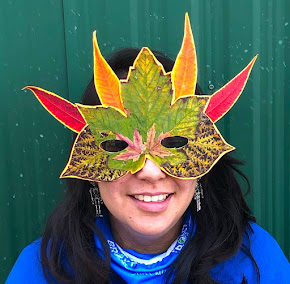While standing in the long line outside The Hungarian Pastry Shop near Columbia University, I was approached by a man who asked if I could give him a job. For a moment there was almost silence, even the laughter from group of gregarious young Asian women just ahead of me became subdued. The man was tall and slim, with dark skin, a few shades darker than my own. He looked about thirty to forty years old, was simply dressed and appeared to be a recent migrant from an African country. Maybe it was the fact that I was the one person standing in the line with skin color resembling his own that prompted the encounter. I asked the man why he thought I could hire him and was surprised to hear him reply that (he thought) I owned a business. I laughed a bit and told him that I would hire him and his family members if I could but, I did not own a business. The man stepped back to his spot close to the end or the sidewalk. After a few more minutes of standing in line I went over to him and said that I could buy him breakfast if he wanted. He was grateful for the gesture and as I as almost ready to enter the shop I asked what pastry he wanted. His answer was "Rice, anything with rice".
Oryza glaberrima, commonly called Hill Rice, Upland Rice or African Rice, was a food that my family prepared when I was a child but discontinued the practice when other cheaper Asian rice varieties flooded the market. Back then we called it 'Creole rice' and I remember picking through the grains to remove any unwanted matter before "fanning". Fanning or winnowing is the process of swiftly flipping a tray, throwing the grains several inches into the air, allowing the wind to move through the grains and blew away chaff. The cooked rice was reddish-brown and had a nutty flavor.
Four centuries ago grains of rice and other seeds were braided into the hair of African slaves before they were forced to journey across the Atlantic Ocean. Like the slaves, African Rice adapted to land in the southern parts of the US. Some of this rice made its way to Trinidad and Tobago with freed slaves who had fought alongside the British in exchange for their freedom. For a long time Oryza glaberrima was presumed to no longer be in existence, because of the popularity and ubiquity of Asian species of rice. A few years ago, it was discovered growing in the village of Moruga, Trinidad; it was all along being cultivated by small groups of growers who cherished this delicious connection to their African heritage.
In 2017 I proposed a design for the erection of a twenty-foot mounded platform that was to be planted with African/ Hill Rice on Randall's Island. The elevation served the function of an overlook and the project was to be both an experiment in the feasibility of growing Oryza glaberrima in USDA Zone 7 conditions and well as to access its efficacy on erosion control. Oryza glaberrima can be grown on dry land, without the irrigation needed for other rice species. In this regard it may be very valuable as our planet warms and water becomes more scarce. Also, growing rice that does not need standing shallow water eliminates the concern of mosquito infestations. As part of my graduate thesis I proposed planting African Rice along the contour lines of hillsides. Farmers can benefit from contour farming to keep valuable topsoil in place on sloping land. In addition, this method of growing on slopes slows down runoff and allows water to soak into the soil. Rows of this edible grass were to be accompanied by rows of deep-rooted Chrysopogon zizanioides, called vetiver (a grass my mother harvested, dried and braided), to stabilize hillsides on areas of the Northern Range of Trinidad. Those areas were increasingly under threat of deforestation and subsequent flooding, exacerbated by aggressive squatting practices by locals and by illegal migrants from nearby Venezuela.
I started growing a few grains of African Rice on Randall's Island in 2018, just days after completing grad school. In 2023 I grew about 12 plants that produced beautiful, plump grains. This delicious and nutritious rice may someday feed the world. Africa, the land that continues to give, as much as others take, may teach us valuable lessons in adaptability and survival. There are now thousands more migrants in the US that there were in 2017 and most of them are from countries that rely on rice as their primary food source. Many of them spent or are spending their first days in the US in shelters on Randall's Island.
I marvel about the resilience Oryza glaberrima, a grass, like sugarcane, another culturally important food crop. I marvel about the resilience of Africans displaced centuries ago and all through the years, and all people displaced from their homeland. There is much to admire about the tenacity of the man who made it through numerous countries before arriving in New York. There he was standing in his new, alien land in winter. I imagined the obstacles he had faced and the many he would face as I know of the multitude I have encountered and continue to endure in the thirty-plus years since I too arrived here, to begin a new life, from nothing. Adaptation to and assimilation into this landscape is crucial but like so many other immigrants, I connect to my ancestral roots through the foods I consume. As an immigrant horticulturist, I maintain terrain and tradition through the food crops and hummingbird-magnet plants I grow here, on this land.
On that day a few weeks ago, I left the pastry shop and together with the new immigrant job-seeker, I located a Thai restaurant where we ordered a meal of red curry and rice.
























































